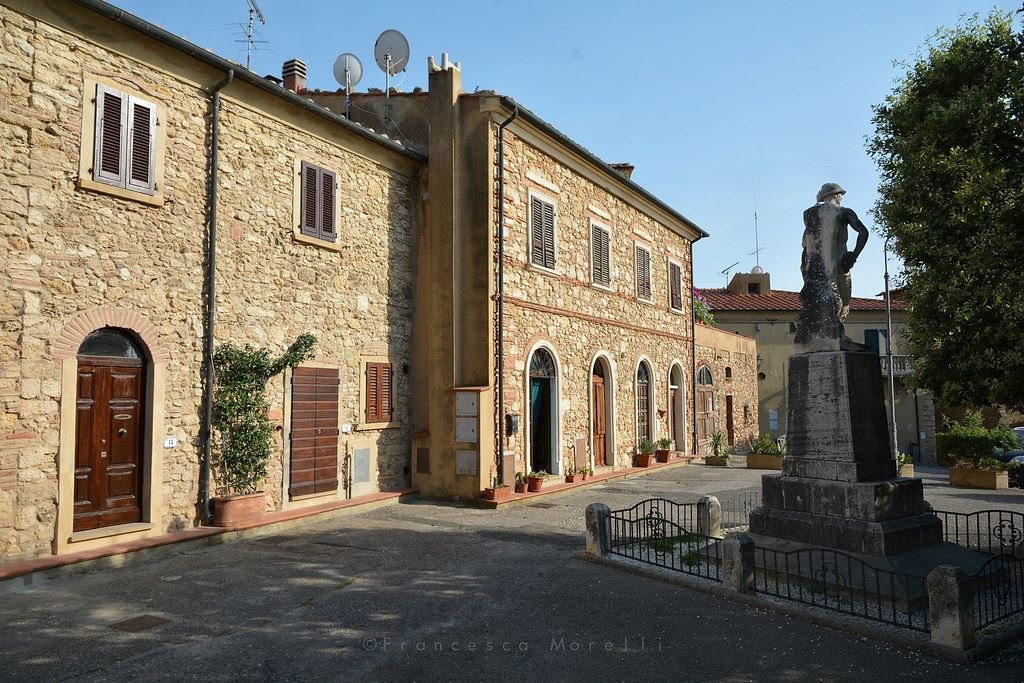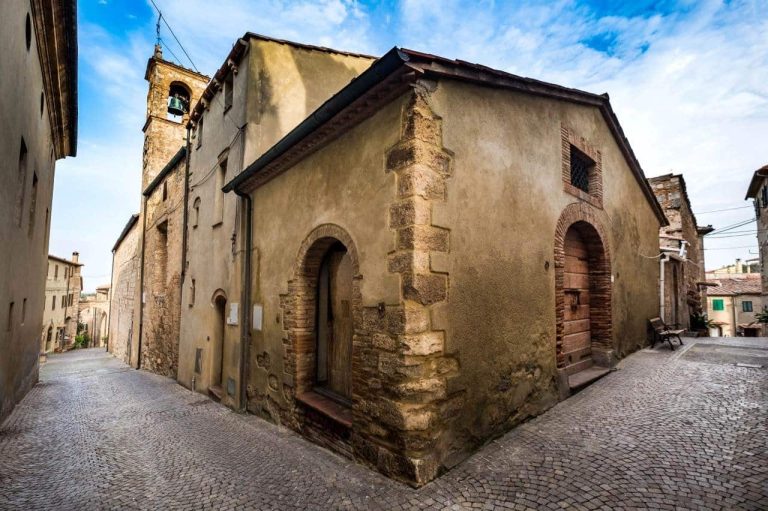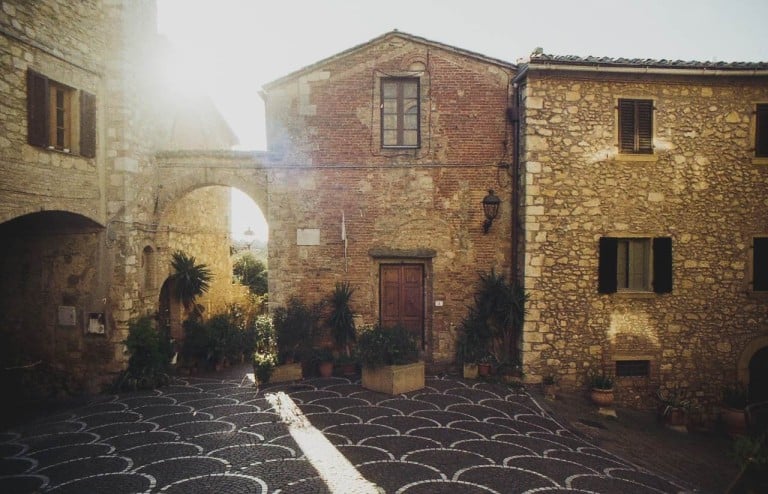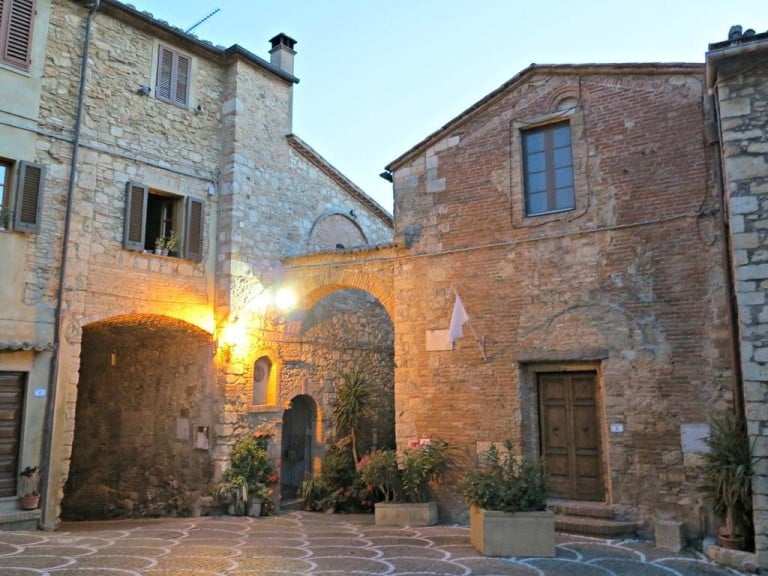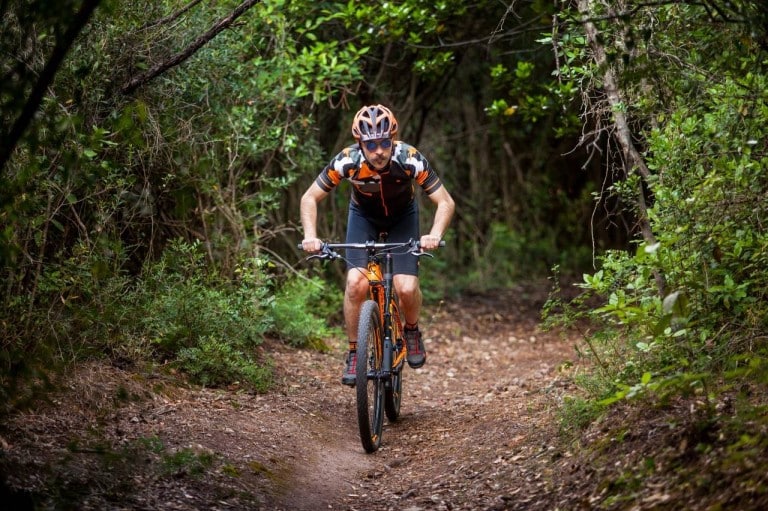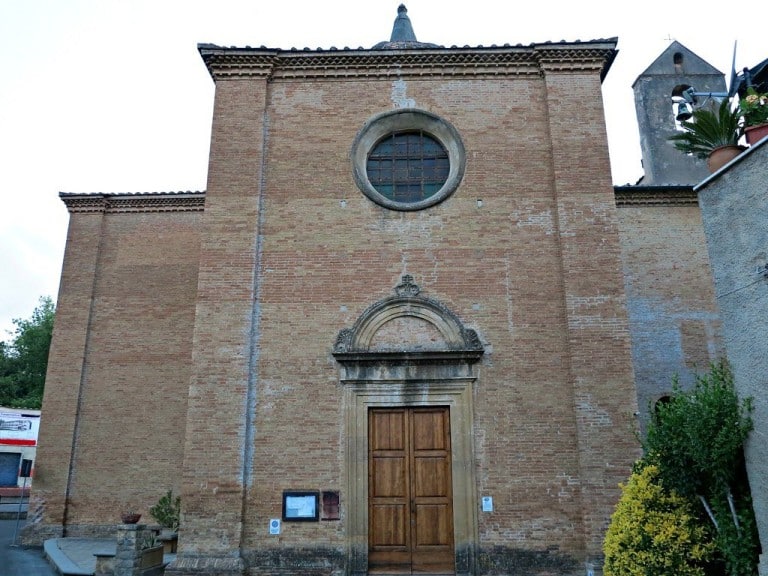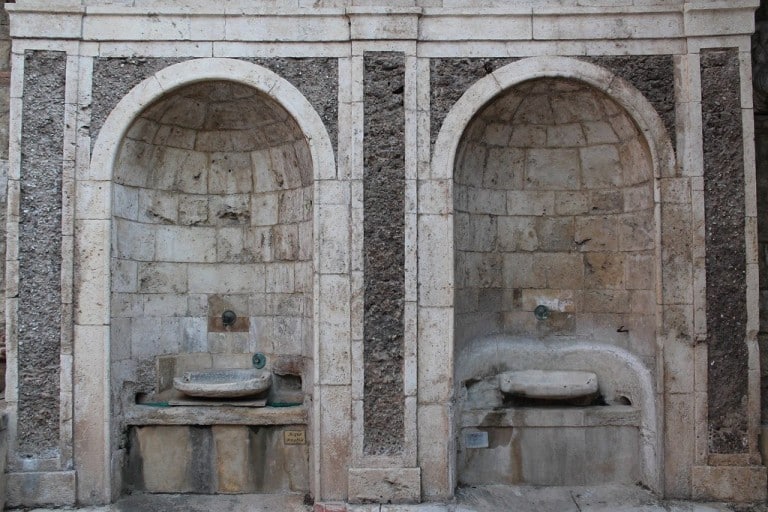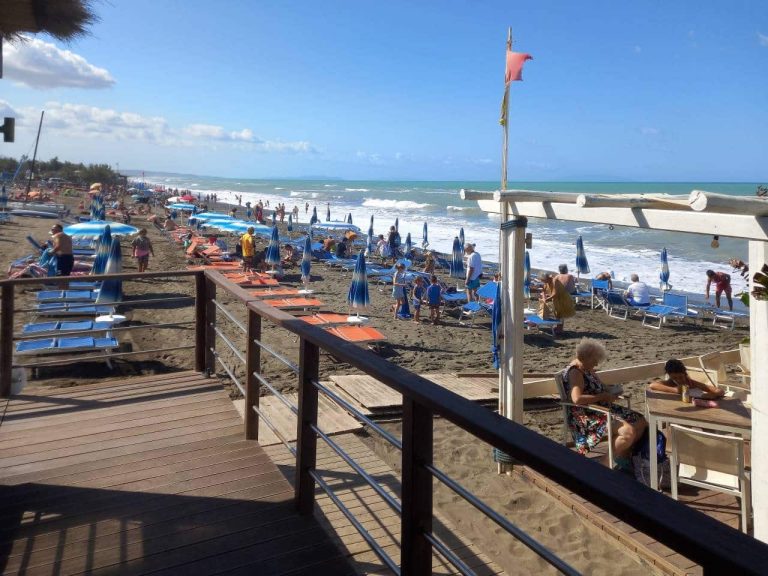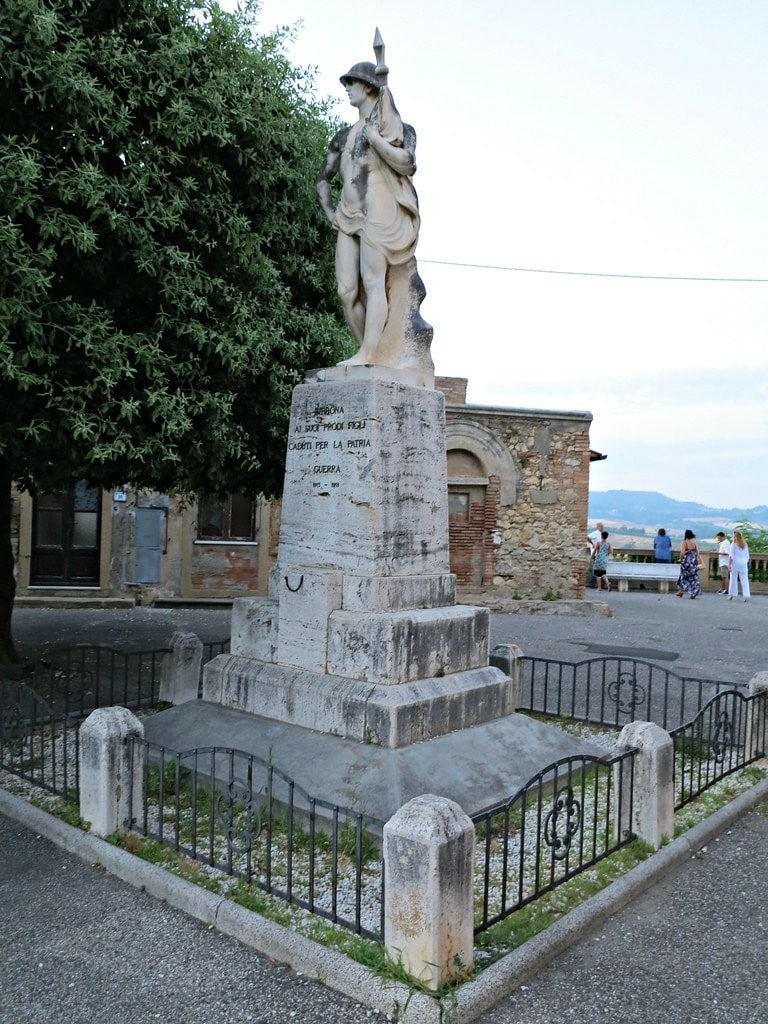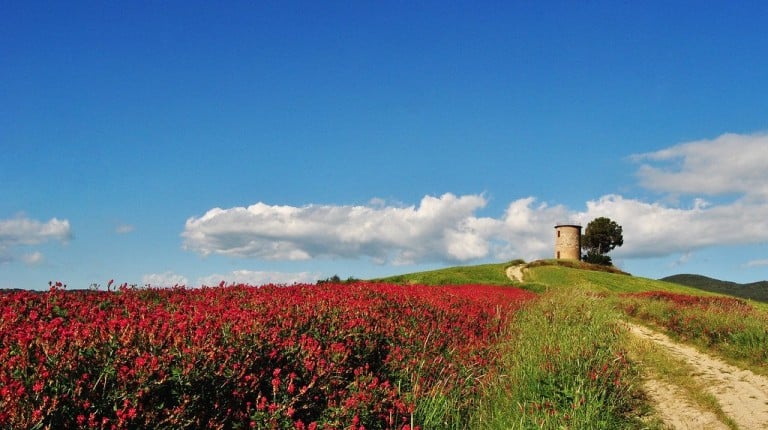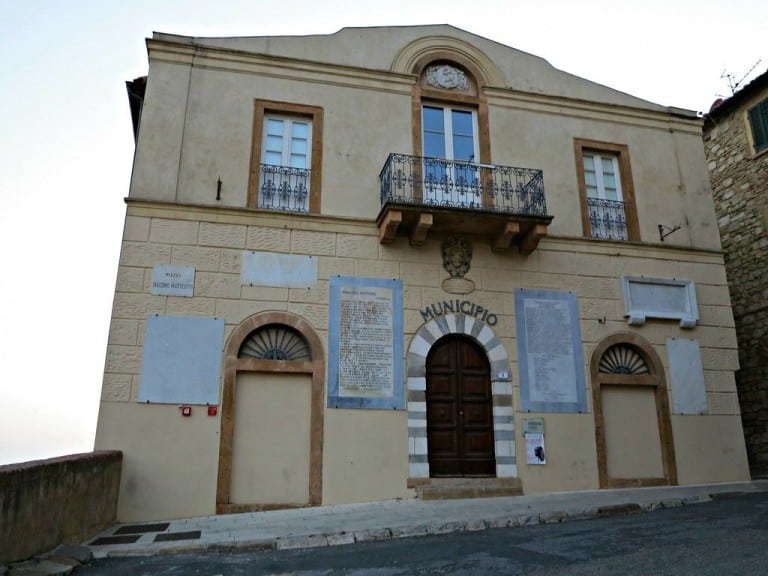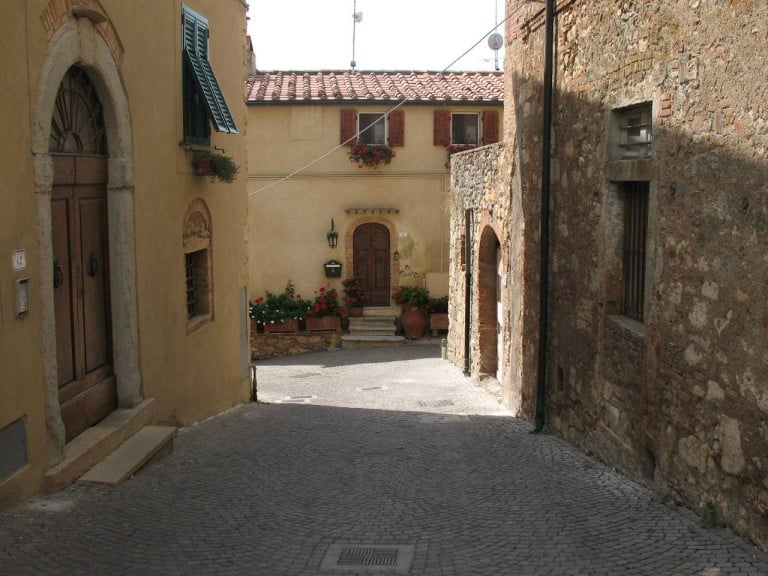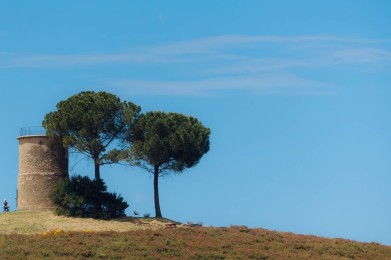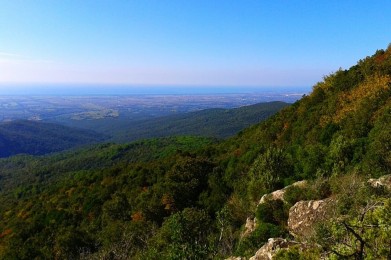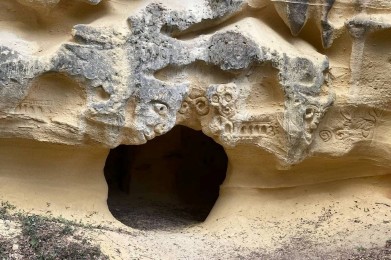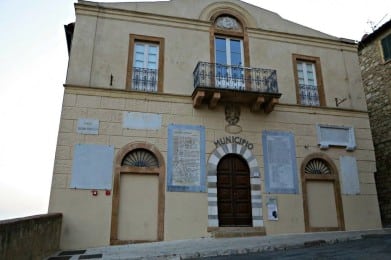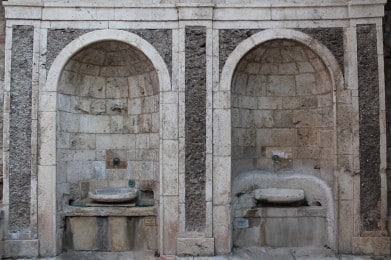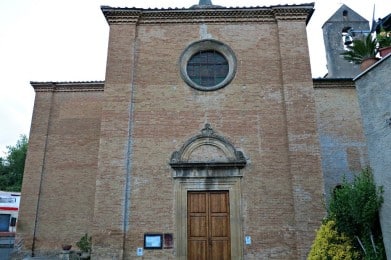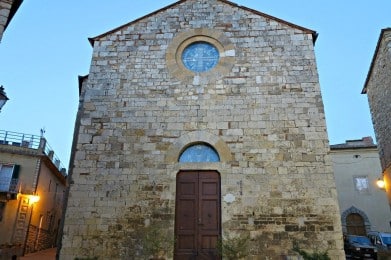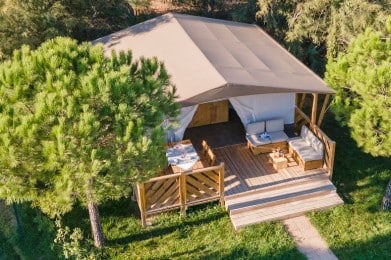The beating heart of Bibbona is the medieval village, with its intricate network of narrow alleys, stairways, stone arches and small paved squares. Every corner tells ancient stories, told by the wind that blows through the streets like a silent guardian of memory. Not surprisingly, the inhabitants themselves call these alleys "rughe", rughe of time and of the village, witnesses to centuries of life, transformations and mysteries.
Artistic treasures and sacred architecture
Among the most outstanding religious buildings is the Pieve di Sant'Ilario, built with local sandstone, attested since 1175 and enlarged in the following centuries. It represents one of the few Romanesque churches that survived Saracen raids in the area, with two ancient marble stoups and 16th-century paintings inside.
At the entrance to the village is the striking Church of Santa Maria della Pietà, dating from 1482. Its Greek-cross plan and mysterious epigraph "Terribilis est locus iste" on the facade have fueled legends linking the place to Templar orders and enigmatic figures such as Leonardo da Vinci. Indeed, it is said that the Renaissance genius may also have contributed to the design of the church, inspired by the Church of the Holy Sepulcher in Jerusalem.
Also noteworthy is the Church of St. Joseph, on whose facade stands the coat of arms of the Vallombrosian order, evidence of the monastic presence in the area. The medieval town hall, with its valuable Historical Archives, preserves centuries of administrative and civic life in the village.
Fortresses and symbols
Bibbona Castle, surrounded by mighty walls, dominates the historic center and represents the ancient fortified nucleus around which the village developed. Not far away, the Fonte di Bacco with its arch adorned with mysterious symbols and the statue of the god of wine, reminds us of Bibbona's deep connection with the cult of wine and nature.
An important symbol of the Etruscan past is the bronze statuette of the goat, found in the municipal area and now housed in the Archaeological Museum of Florence, which has become the town's identifying emblem.
Marina di Bibbona: among dunes, pine forests and crystal clear sea
Descending toward the coast, one comes to Marina di Bibbona, a seaside resort that grew up around the 18th-century fort that served as a garrison against pirate raids. Today it is one of the most popular destinations on the Etruscan Coast thanks to its fine sandy beaches, shaped by natural dunes and tombolos of Mediterranean scrub, and clear sea awarded Blue Flags and Sails by Legambiente.
Large areas of free beach alternate with equipped establishments, with nautical services and even stretches dedicated to pets. The coastal pine forest provides shady areas and paths ideal for walking and biking. Coastal restaurants offer excellent seafood cuisine, especially dishes made with fresh fish and local extra virgin olive oil.
A paradise for nature and sports lovers
Bibbona is an ideal destination for cycling tourism. The area is home to the Gran Fondo degli Etruschi, one of the most popular bicycle races on the Tyrrhenian coast, and the Strada del Vino Costa degli Etruschi, which runs through the vineyards of the DOC Terratico di Bibbona, can also be traveled by bicycle. For lovers of trekking and horseback riding, the Macchia della Magona Nature Reserve is a true green paradise, with 16 marked routes among heather, strawberry trees, wild olive trees and historic charcoal pits. At one time, in fact, the reserve was a primary source of timber for Cecina's Magona ironworks.
Traditions and flavors
Throughout the year, the village comes alive with folkloric events such as the Historical Procession and the Palio delle Botti, which reenact ancient customs and traditions among the village streets. Bibbona is also famous for its oil mills, where you can taste bruschetta topped with locally produced extra virgin olive oil, an authentic expression of Tuscan cuisine, made of simplicity and authenticity.
A place full of wonders
Bibbona is not just a place, but an experience. It is the scent of the wind that comes from the sea, it is the silence of the woods that tell ancient stories, it is the beauty suspended in time of its streets, its buildings, its views. It is a village that combines the charm of history with the pleasure of nature, the taste of tradition with the energy of the present. A terrible place, said the epigraph. But, on closer inspection, it is an extraordinarily wonderful place.

